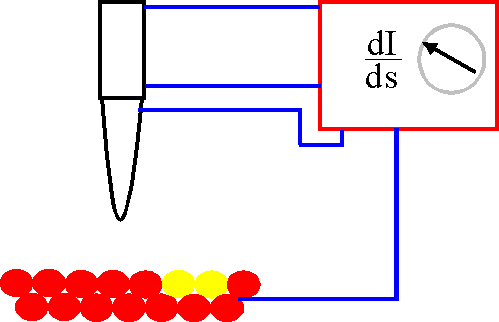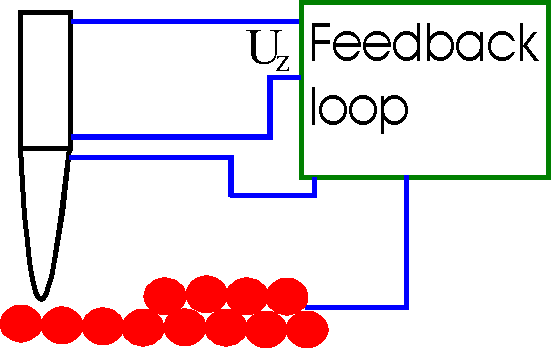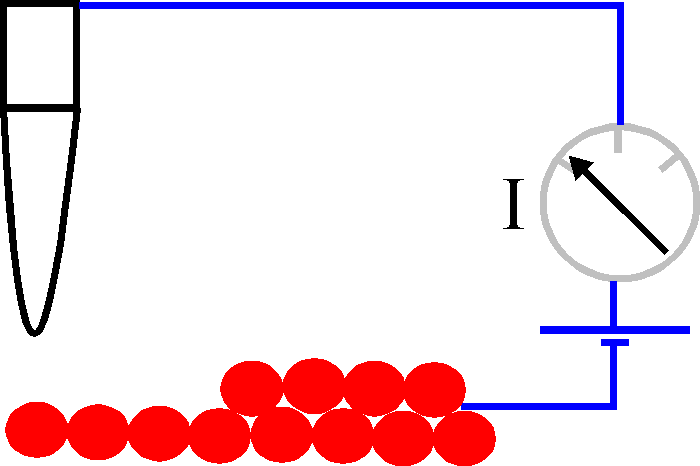3. Modes of Operation
3.1. Constant Current Mode
3.2 Constant Height Mode
3.3 Barrier Height Imaging
 |
Up to now homogoneous surfaces were considered. If there is an inhomogeneous compound in the surface the work function will be inhomogeneous as well. This alters the local barrier height. By using the two modes described above we would get a virtual hole or adatom. But this can further be explored: Differentiation of (*) yields
Thus the work function can directly be measured by variing the tip-sample distance, which can be done by modulating the current with the feedback turned on. |
3.4 Scanning Tunneling Spectroscopy
If the matrix element and the density of states of the tip is nearly constant, the tunneling current (**) can be estimated to

Differentiation yields the density of states
![]()
The density of states can be deduced by
- Modulation of the bias voltage
- Current-Imaging Tunneling Spectroscopy (CITS): The tip is scanned in the constant current mode to give a constant distance to the sample. At each point the feedback loop is disabled and a current-voltage curve (I+V curve) is recorded.

